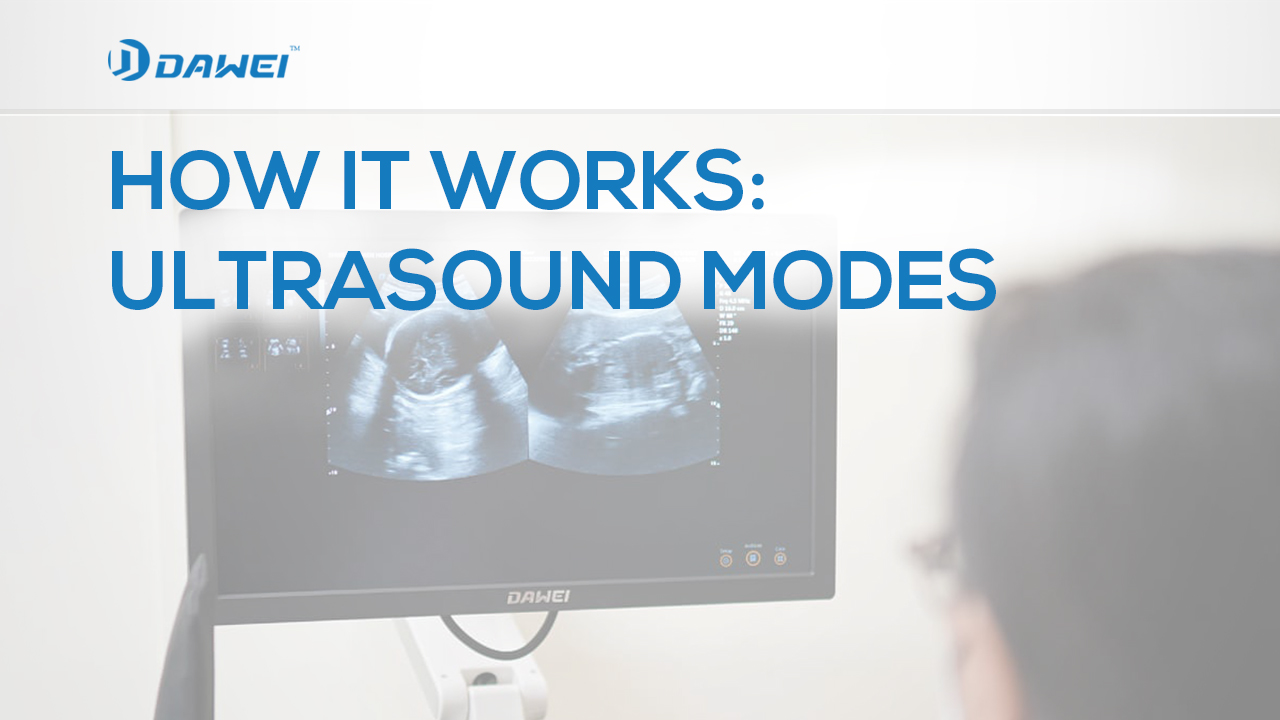When we look at things with our eyes, there are various ways in which we “look “. At times, we might choose to look only straight ahead like when we read a notice on a wall. Or we might look horizontally when scanning the sea. In a similar way, there are many different ways an ultrasound probe can “look “ at things. These ways are called “modes “ and these will be described below. The modes are named with letters and may sound very confusing. However, we will discuss each in turn and you will, in the end, understand the basics of them.
A Mode
A-mode is the simplest form of ultrasound imaging and is not frequently used.
The image is shown on the screen in one dimension. The ultrasound wave that comes out of the probe travels in a narrow pencil-like straight path. A single transducer scans the body. Using an X and Y access, the collected information is then plotted on the screen as a function of depth. A-mode, or amplitude mode, is ideal for measuring distances. A-mode ultrasound may also be used to discover cysts or tumors.
B Mode
B-Mode, also known as 2D mode, presents a two-dimensional demonstration. The brighter the image, the more intense and focused the echo (which is the reverberation of sound waves that the transducer emits) is. Like nearly all other ultrasound images, the position of the image is contingent on the angle that which the transducer is placed.
C-Mode functions similarly to B-Mode, although it has not been as developed to its full potential. Using data and a range of depth from A-Mode, the transducer then moves to B-Mode (or 2D mode) and examines the whole region at the depth originally employed in two-dimensional imagery.
M mode:
M stands for motion. In m-mode a rapid sequence of B-mode scans whose images follow each other in sequence on screen enables doctors to see and measure a range of motion, as the organ boundaries that produce reflections move relative to the probe.
Doppler mode:
This mode makes use of the Doppler effect in measuring and visualizing blood flow. Doppler sonography play important role in medicine. Sonography can be enhanced with Doppler measurements, which employ the Doppler effect to assess whether structures (usual blood) are moving towards or away from the probe, and its relative velocity. By calculating the frequency shift of a particular sample volume, for example, a jet of blood flow over a heart valve, its speed and direction can be determined and visualized. This is particularly useful in cardiovascular studies (sonography of the vasculature system and heart) and essential in many areas such as determining reverse blood flow in the liver vasculature in portal hypertension. The Doppler information is displayed graphically using spectral Doppler, or as an image using color Doppler (directional Doppler) or power Doppler (non-directional Doppler). This Doppler shift falls in the audible range and is often presented audibly using stereo speakers: this produces a very distinctive, although synthetic, pulsing sound.
Post time: Jun-20-2022





